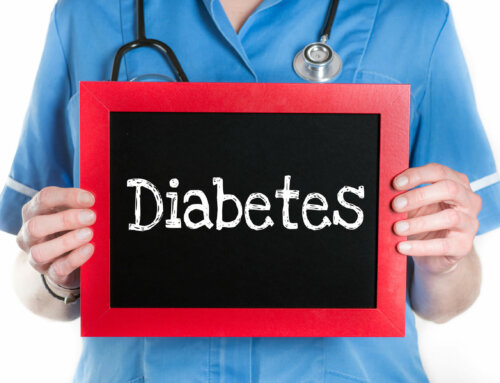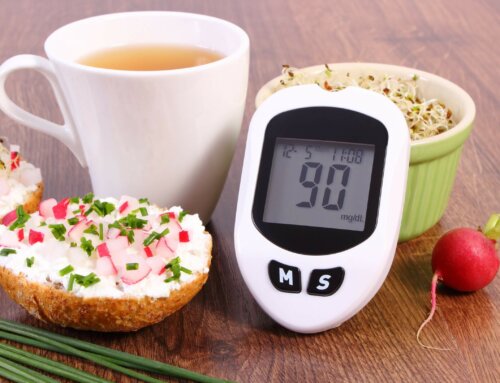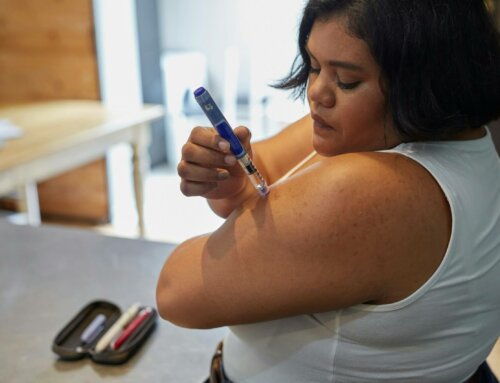There are so many questions relating to diabetes whether it concerns your medications, new treatments, food tricks and tips, physical exercise or mental health issues. Find out what is currently being asked along with the answers to some important diabetes-related questions.
1. Question: What is food noise and how can it affect me?
Answer:“Food noise” is the constant and annoying thoughts that can occupy your mind. The chatter in your head about food is always present. Thoughts about what to eat, when to eat, how much to eat and all the feelings of guilt and anxiety associated with all this chatter, especially when you have diabetes.
It is a common and draining experience which can both physically and mentally overwhelm you, complicate your day and your overall mental health. Thoughts can preoccupy your mind about eating your next sugar or fat fix. “Food noise” is not a documented, diagnostic medical term, but it is being used all over social media and on other news sites to get you thinking and make you aware.
Our environment plays a huge role in these thoughts. Think about flashing road signs and billboards, TV commercials, online printed food and treat ads and advertisements plus blasts on the radio or music streaming services. All this media exposure plays a big part.
Your “inner chatter” becomes an obsession which is difficult to break and a deterrent to weight loss and blood sugar control. “Food noise” can ultimately lead to poor food choices and overeating. Food becomes a priority and a large focus of your day.
Where does food noise come from?
Food noise is part physical need as well as emotional need.
- You may crave food because you skipped a meal, and you are truly hungry.
- You may crave food since you combine it with your emotional needs and want instant satisfaction. You have had a bad or stressful day and all you can do is focus on having a bag of chips or a chocolate chip muffin when you get home. Sweets and fat tend to be the focus.
- You obsess about a rich, creamy sweet dessert even though you just finished eating your meal and you are already full.
- You think you deserve a reward for being “good” all day. When you eat something yummy, your brain activates and sends out dopamine, a feel good hormone.
- The obsession becomes circular. We crave, eat, and crave again. We like to experience pleasure and good feelings. We focus on empty calories such as donuts, pastries, candy, chips and processed foods.
- Our brains are wired from the beginning to think about eating food during times of deprivation or limited calories available for survival. Physically, most of us do not experience deprivation anymore.
- You are frustrated. You are annoyed.
- You are bored.
- Today, food seems to be everywhere. We rarely encounter pictures or advertisements about cucumbers, celery sticks or watermelon. TV commercials and billboards focus on jumbo pizzas dripping with cheese and pepperoni, donuts with creamy fillings and sugary toppings, nachos layered with several types of cheese and covered in fatty meats. Sports arenas mostly offer fatty, processed foods not healthy snacks or meals. Fresh fruits and vegetables with lean protein could be difficult to find. Social media can focus on famous restaurants, dangerous food selections and fried foods. Friends and family sharing cake and dessert recipes on social media can trigger more thoughts about what you don’t have to eat or what you are missing out on.
- Eating a “low calorie” or “low carb” diet can also cause your brain to be obsessed about food. Knowing you are not allowed or cut off from certain foods makes it more of a challenge.
- Too much restriction can encourage poor choices and large to follow.
The good news
There still is “no single diabetes diet.” Work with your health care provider, dietitian or CBDCE (Certified Diabetes Care and Education Specialist) to learn how to control your food cravings, choices and portions. Also, the new diabetes medications address how you feel about food in a different way.
The GLP-1 injections and GIP injections have been known “to turn down the volume of food noise”. The medications, Ozempic for diabetes, Wegovy for weight loss, as well as Mounjaro for diabetes and Zepbound for weight loss, turn down the volume of food noise.
Semaglutide, the active ingredient in these medications “acts on the brain receptors that are associated with rewards.” This helps you push down the constant craving or fix of sweet or fatty foods. They actually slow gastric emptying and digestion which keeps you less hungry and more satiated.
You physically don’t have the need to eat so much. They can make you slightly nauseated which helps you to eat less. When blood sugars start to rise after eating, these drugs can help stimulate the body to produce more insulin. This leads to better blood sugar control.
Weight loss occurs depending on the drug and the dosage. “These injections are not recommended if you have a personal or family history of medullary thyroid cancer, multiple endocrine neoplasms or a history of pancreatitis.” There are even GLP-1 oral medications, such as Rybelsus, which works the same way. According to certain patients “gastric sleeve surgery turns down the obsession and food noise too.”
Besides medication, what else “turns down food noise”?
- Eat every 4-5 hours (just as you should be for your diabetes care). Keeping your blood sugar stable helps eliminate the constant brain chatter. Be intentional about when and what you choose to eat. Instead of grabbing something when hunger kicks in. Avoid being too hungry.
- Use your knowledge or develop knowledge understanding that “it is best to choose whole foods that contain fiber, good fats, lean protein, low-fat dairy and whole grains”.
- Do not stop at vending machines, fast food restaurants, or be forced to make rushed and poor selections. Plan ahead. Eating healthier can decrease cravings. Easy examples are a small apple with 1-2tbsp of unsalted nut butter, 2 hard boiled eggs and whole grain toast, or 2 whole grain crackers with 2 tbsp of hummus. Keep healthful snacks available just in case.
- Is it real hunger, real thirst or just an emotional thought? Try to recognize and understand if it is true hunger and understand hunger cues. Ask yourself if you are hungry because it is time to eat or are you just thirsty? Are you obsessing about food rather than actually needing it? Do you feel the symptoms of low blood sugar such as weakness, shakiness, blurry vision, anxiety, dizziness or are you just bored? Is your stomach growling? Do you have gas pains? Are you just thirsty? Do you have a dry mouth, dry lips, dry eyes, a sticky tongue and dark urine. When did you drink last? Pick up on your own body cues. Your body sends out signals when you are hungry or thirsty. Both sensations and needs can produce a headache, or make you feel tired, irritable or dizzy. Think and analyze before you act but also have a plan. Do not wait too long.
- Understand what your own stressors are. Each of us have different triggers. First figure out what yours are. Then find techniques and do something about it instead of just grabbing something to eat. Everyone has stress so you need to find a way to cope with it other than eating. With diabetes you need to be more diligent and careful even during stressful times. Rushing, running late, over committing, being in traffic, getting lost, and anxiety can all have an effect on our hormones and increase our food cravings. Simple remedies instead of rushing to eat including a better sleep cycle and schedule, making a plan, daily physical exercise, deep breathing, slowing down, talk therapy, support groups or medication if you require it.
- Am I really hungry or am I being mindless? Drink a glass of water, eat a healthful snack and wait 20 minutes. See if you are still hungry or display the signs of hunger.
- Lose distractions. Do not stand while eating. Do not talk on the phone. Do not read or watch TV. These are distractions which make it difficult to really focus on your hunger.
- Avoid triggers. If you know certain foods cause cravings and over-eating, avoid them totally. Do not avoid entire food groups such as “all carbohydrates.”
- Stay hydrated with a variety of calorie-free beverages. Some people are fine drinking plain water all day without becoming bored or needing something else to drink. If you require different flavors or bubbles find calorie-free alternatives. Even sugar-free flavored drops added to a glass of plain water can offer a different taste and satisfy your need. Many of us stay in a constant minor state of dehydration. Especially the elderly and those who live in hot and humid climates. You can drink coffee, tea (decaf if you need to), sparkling water, plain or calorie-free flavored waters or sugar-free sodas in moderation. Use a tall, pretty glass and put fruit pieces in the drink. Add fruit to ice cubes before freezing. Use mini umbrellas in your drinks for decoration.
- Avoid total deprivation. If you ban foods entirely or never have a “treat”, you put yourself in a position for additional food noise and eventually overcompensating. Consider a treat that pleases you and enjoy it occasionally. A treat is not a daily occurrence, that is why it is called a treat. Think about holidays, special times or events. Eat half of it, share or take a few bites. Eat it slowly.
2. Question: The GLP-1 injections are being used “off label” for people who are obese but do not have diabetes. Do they offer the same effects? Is health insurance paying for these medications?
Answer:Rates of obesity have tripled in the last 60 years with over 42% of Americans considered obese and 31% considered overweight. Overweight and obesity are defined as “abnormal or excessive fat accumulation that may impair health.” Although now only considered a rough guide, body mass index or BMI is currently used to measure for these conditions.
A BMI of 18.5-24.9 is deemed healthy. A BMI of 25-29.9 is considered overweight and a BMI of above 30 is thought of as obese. It has been confirmed many times that “extra weight is linked to chronic health conditions including diabetes, hypertension, congestive heart failure and sleep apnea.” Even cancer rates are elevated with obesity.
As health care providers, we are constantly searching for ways to help our patients achieve weight loss and offer ways for them to maintain the weight loss. Many weight loss treatments in the past have been both dangerous and ineffective. The weight would come off and then quickly reappear.
Recently with the discovery of new diabetes GLP-1 and GIP injections, Ozempic and Mounjaro, we have recognized both substantial weight reduction that stays off, along with improved blood sugars. Could this work for those without diabetes who just have weight to lose and may develop diabetes?
First the diabetes drugs were used “off label” for weight loss, which lead to a shortage of these important medications. When diabetes drugs are used off label “they are not covered by insurance.” At this point these medications can cost over $1000 or more out of pocket per month per patient.
Now weight loss specific GLP-1 and GIP injections (not those used to control diabetes) are being used. They are named Wegovy and Zepbound. At this point in time, they are not covered by commercial health insurance or Medicare. Medicare does not cover “anti-obesity” treatment.
Private insurance and employee covered insurance needs to be examined individually. Many people are interested in this treatment but can’t or won’t pay out of pocket. Ozempic (used for diabetes treatment) and Wegovy (used for weight loss without diabetes) contain some of the same active ingredients in different amounts of the drug.
The side-effects are also similar such as loss of appetite, nausea, constipation, stomach pain, vomiting and diarrhea. Both drugs require a prescription and are injected once weekly. Dosages start low and are titrated up until an effective amount is found. Your physician can prescribe any of these drugs specifically for weight loss.
Off label “out of pocket” cost for Ozempic is about $907.00 a month. Wegovy is over $1600 a month without insurance coverage. Most health insurance plans do not cover weight loss medications. Not only do these drugs promote weight loss but studies have shown they can “reduce the risk of heart attacks and stroke by 20% for adults with heart disease and obesity.”
With more and more positive results, private insurance and Medicare will eventually decide “if weight loss treatments should be paid for now, to protect many people from expensive and debilitating diseases later in life.” These medications should be offered along with nutritional counseling, lifestyle changes, and behavior modification.
Since these medications are relatively new, it’s still difficult for the insurance companies to make a financial decision for patient coverage. Stay tuned to see how the future plays out as we obtain more positive statistics and information.
3. Question: What is the Insulin Act?
Answer: In April of 2023, the Insulin Act was introduced by Senator Jeanne Shaheen of New Hampshire and Susan Collins of Maine. There has been legislation on both the federal and state levels to “access affordable insulin for both the insured and uninsured people with diabetes.”
It’s documented that “1 in 4 people who use insulin in the US report rationing this life saving drug.” The Insulin Act limits the cost of insulin to $35.00 per bottle for patients with commercial insurance. The co-pay for Medicare recipients’ is similar at $35.00. The Insulin Act also helps new biosimilar insulins come to market faster.
The main advantage of biosimilar insulin is the “potential cost compared with the original insulin of about 15%”. This provides substantial cost savings. Patients can expect to see a similar blood glucose lowering effect and safety profile as the reference or original product.
Some insulin manufacturers will provide insulin at no cost through the patient assistance programs to the uninsured and those who meet income eligibility requirements. The most important companies that produce insulin (Novo- Nordisk, Lilly and Sanofi) all announced making insulin more available and affordable. The $35.00 fee per bottle went into effect on January 1st, 2024 after tremendous advocacy by diabetes groups. Remember, insulin saves lives and over 8.4 million Americans rely on insulin.
4. Question: Is there any new medication for type 2 diabetes that is less expensive?
Answer: A new oral diabetes medication called Brenzavvy (bexagliflozin) was approved in late 2023 by the FDA for type 2 diabetes, along with a proper eating plan and regular exercise. “It poses no risk to the heart or blood vessels” according to the latest studies.
It has a lower monthly cost compared to other drugs in its class which are SGLT-2 inhibitors. Other drugs in this class are called Invokana, Farxiga, Jardiance and Steglatro. These medications are taken once a day orally, and work by “helping the body remove excess sugar through the urine.”
The most common side-effects include female genital infections, serious urinary tract infections (UTIs), increased bone fractures, nausea and constipation. “50% of Americans with type 2 diabetes stop taking these oral medications within a year due to high costs and insurance barriers.” Brenzavvy will be extremely cost effective with good results for the type 2 diabetes population.
5. Question: Can Alpha Lipoic Acid really help with diabetic neuropathy?
Answer: Diabetic neuropathy is nerve damage which is created by uncontrolled, long term high blood sugars. High blood sugars damage the small blood vessels that feed the nerves. Neuropathy often occurs in the feet, arms, or hands with symptoms of tingling, numbness and burning.
After a while, you are much more prone to foot or hand injury and balance problems. It could even lead to amputation. Alpha-lipoic-acid or ALA has been studied to see if it helps with diabetic neuropathy. ALA is naturally found in certain foods including broccoli, peas, pork, tomatoes, Brussel sprouts, spinach and red meat. It is an antioxidant which protects cells and aids your immune system.
An ALA oral supplement can increase vitamin C and E levels and raise glutathione, another important antioxidant. These products can “clear free radicals” which cause cell damage. When you have diabetes “you either clear free radicals more slowly, you produce more free radicals or both.” Studies have shown “people with diabetes experience improvements in pain, numbness and tingling.”
ALA may even mimic the effects of insulin. Either get ALA from the foods listed above or take an oral supplement. Foods do not contain the amount of ALA in a supplement. Take an ALA supplement 30 minutes prior to a meal on an empty stomach or 2 hours after a meal for best results. Usually “a dose of 300-600 and up to 1800mg a day” is suggested for those with diabetes.
Taking an ALA supplement is especially good for the elderly with diabetes since their body generally has more inflammation and is less resilient. Continue to take your prescription medications, as directed, and always check with your health care provider before starting a new supplement. Continue to exercise, maintain a healthy weight and be mindful of your diet.
6. Question: What is “one big thing” we can expect in 2024 relating to type 2 diabetes?
Answer: One of the biggest focuses on diabetes type 2 in 2024 will be the return to “diabetes prevention.” The CDC will try to put energy into the “Diabetes Belt”. The Diabetes Belt refers to a region of the country which includes 644 counties across 15 states where people are more likely to develop and have type 2 diabetes.
The “Belt” refers to mostly the southern region of the country. Obesity and inactivity account for nearly a third of the increased risk for type 2 diabetes in that region. States included are Georgia, Tennessee, Texas, Louisiana, South Carolina, Alabama, Arkansas, Kentucky, Ohio, Virginia, West Virginia, Pennsylvania and North Carolina. Within this belt “11.7% of the population have been diagnosed with diabetes.”
Communities and agencies will focus on projects to help “encourage positive lifestyle choices” such as installing sidewalks to promote walking over driving and maintaining park areas to encourage physical activity and play. Other aspects of prevention will include better eating habits, recommending smaller portions, and less fried foods.
A focus will be on The Diabetes Prevention Program, led by the National Institutes of Health-NIH. The National Diabetes Prevention Program (National DPP) is a partnership of public and private organizations working to prevent or delay type 2 diabetes.
“Working together” makes it easier for people at risk for diabetes to participate in evidence-based lifestyle change programs to reduce the risk of type-2 diabetes. There are certain criteria to participate in the DPP and they can be found on the CDC site. Goals include- Losing 5-7% of your body weight which can “lower your diabetes risk by 58%”, getting at least 150 minutes of moderate intensity exercise per week, learning better mental coping techniques and offering more education and coaching skills.
7. Question: What are easy ways that help with weight loss for those with diabetes, naturally, without drugs?
Answer: Getting to and maintaining a healthy weight is important for everyone, but especially important for those with diabetes. The extra weight causes blood sugars to rise and eventually increases your risks for complications including heart disease and high blood pressure.
Fat tissue is active and increases health problems. Changes in your lifestyle is one of the best answers. None of these recommendations are too extreme and will assist you in weight loss as well as controlling your diabetes. Small, focused changes are better than making no changes at all.
Don’t let setbacks influence your motivation. Always follow up with your physician and keep taking all your prescription medication as recommended. Discuss with your health care provider if you think your current medication is causing you to gain weight as some diabetes drugs do that.
Easy and quick changes you can make:
- Set small and realistic goals. Keep, track and re-evaluate goals. Look at the long-term benefits not the immediate ones.
- Physical movement daily or as much as possible. Break sessions up into several short ones. Mix up aerobics, walking, swimming, dancing, biking, gardening and weight training to increase muscle mass and burn calories.
- Reduce sugar and processed foods. Eliminate sweet drinks.
- Count carbohydrates. Eat whole grains. Spread out your carbs using small portions divided up between all your meals.
- Do not skip meals.
- Eat fiber rich meals to reduce hunger.
- Eat healthy fats in moderation. Nuts, seeds, olives, olive oil and avocados.
- Eliminate fried foods.
- Add whole foods both cooked and raw fruits and vegetables.
- Avoid boxed and bagged foods.
- Limit sodium. Use spices, herbs and citrus for flavoring.
- Eat enough lean protein and low-fat dairy daily.
- Limit or eliminate alcohol.
- Prepare your own food instead of eating out.
- Eat slowly and mindfully.
- Sleep, sleep, sleep. Get on a schedule. Check to see if you suffer with sleep apnea. Get it treated.
- Recruit family and friends to help you stay focused.
- Eliminate or learn to deal with stress.
- Join a support group.
- Avoid hypoglycemia or low blood sugars which will then lead you to overeat.
- Avoid buffets and all you can eat meals.
Continue to ask questions and learn answers to help you manage your diabetes! There is always new information.
References:
- https://www.cdc.gov/diabetes-prevention/
- https://www.loseit.com/articles/what-is-food-noise-and-how-do-we-turn-it-down
- https://www.medicinenet.com/healthy_living_mistakes_even_healthy_people_make/article.htm
- https://www.medpagetoday.com/opinion/second-opinions/108268
- https://diabetes.org/tools-resources/affordable-insulin
- https://diatribe.org/diabetes-medications/brenzavvy-type-2-diabetes-drug-available-less-50-month
- https://www.ncbi.nlm.nih.gov/pmc/articles/PMC9824456/
- https://www.healthline.com/health-news/the-years-biggest-medical-advancements-in-diabetes-treatment
- https://www.medicinenet.com/30_ways_to_lose_weight_naturally/article.htm
- https://www.mayoclinic.org/diseases-conditions/type-2-diabetes/expert-answers/byetta/faq-20057955
- https://diabetesed.net/wp-content/uploads/2022/07/Diabetes-Belt-CDC.pdf
- https://www.ncbi.nlm.nih.gov/pmc/articles/PMC4119845/
- https://www.who.int/news-room/fact-sheets/detail/obesity-and-overweight
- https://www.drugwatch.com/drugs/ozempic/wegovy/
- https://www.ncbi.nlm.nih.gov/books
- https://bjd-abcd.com/index.php/bjd/article/view/346/541







Leave A Comment